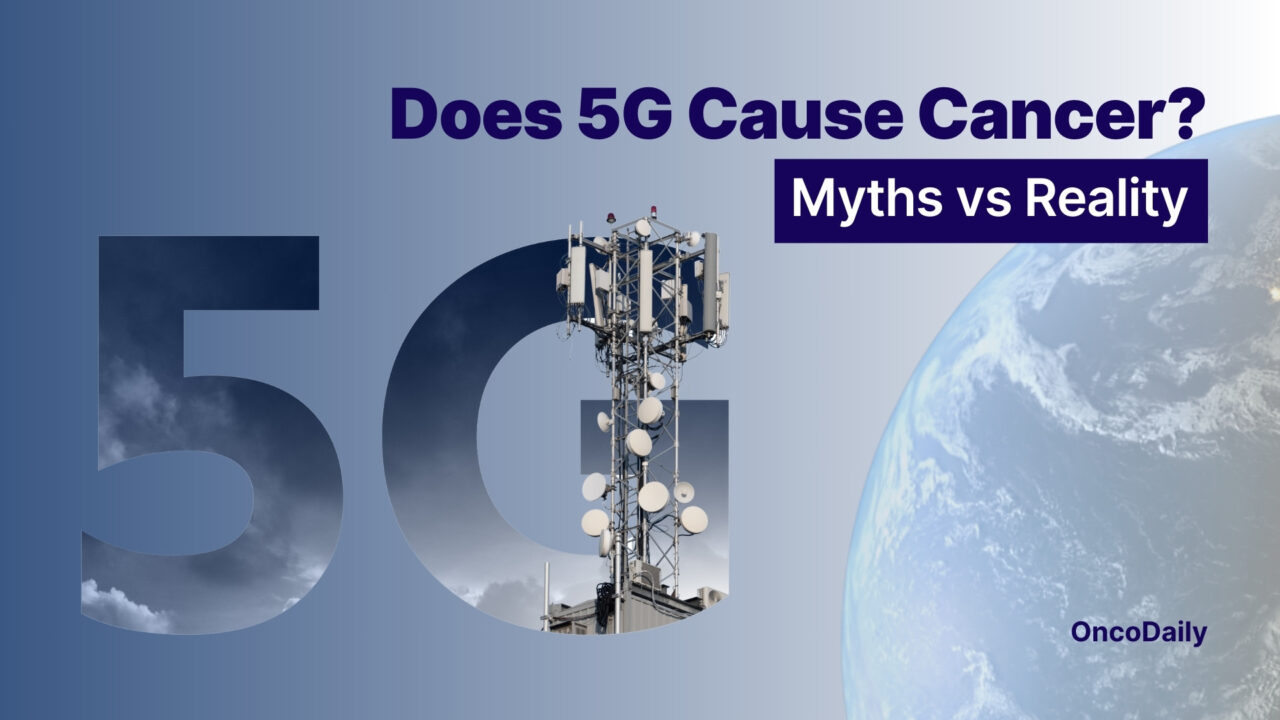
Does 5G Mobile Network Cause Cancer? Myths and Facts
The rapid deployment of 5G networks is reshaping the global communications landscape, promising faster speeds, lower latency, and more connected devices. As of 2024, over 100 countries have launched or are in the process of launching 5G technology, marking a monumental shift in how we live and work. However, with its widespread adoption, concerns have emerged regarding potential health risks, particularly the claim that 5G exposure may contribute to cancer.
This article explores the myths and facts surrounding the relationship between 5G technology and cancer risk, examining scientific evidence and addressing common misconceptions. By analyzing the biological mechanisms of radiofrequency radiation, the regulatory standards set by health authorities, and recent studies on 5G, this article aims to provide a comprehensive, evidence-based perspective to inform public understanding and dispel fear-mongering regarding 5G’s potential health impacts.

Electric painting, 1985 Jorg Immendorff ,oil on canvas 285.4 × 400.2 cm
What Is 5G Technology?
5G, the fifth generation of wireless technology, significantly improves upon 4G and 3G networks by offering faster speeds, lower latency, and enhanced connectivity. Predicted speeds can reach up to 10 Gbps, which is up to 100 times faster than 4G. Latency, the time it takes to send data, could be as low as 1 millisecond with 5G. 5G also supports many more connected devices within an area, enabling the massive IoT ecosystem. To achieve these improvements, 5G uses various wireless spectrum bands, including sub-6 GHz for good coverage and millimeter wave (24-40 GHz) for superfast speeds. It employs technologies like MIMO antenna systems, small cell networks, and edge computing to enhance network capacity, density, and reduce latency.
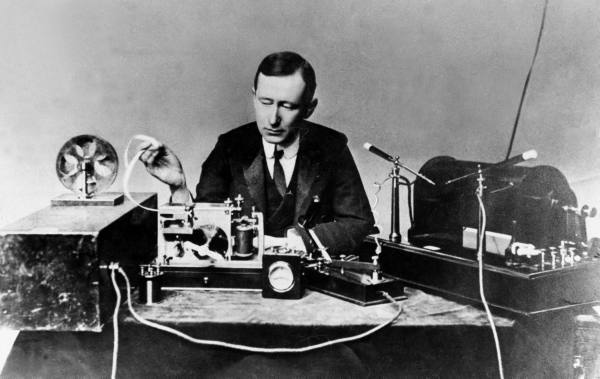
Electrical engineer/inventor Guglielmo Marconi operating apparatus similar to that used by him to transmit first wireless signal across Atlantic.
Understanding Radiation: Ionizing vs. Non-Ionizing
Ionizing and non-ionizing radiation are two types of electromagnetic radiation, distinguished primarily by the energy they carry and their potential biological effects.
Ionizing radiation has enough energy to remove electrons from atoms, potentially damaging DNA and cells. This can lead to mutations that may result in cancer. Examples of ionizing radiation include X-rays, gamma rays, and radioactive decay. The higher energy levels of ionizing radiation can penetrate deep into tissues and cause molecular damage that increases the risk of cancer (National Cancer Institute, 2020)
Non-ionizing radiation, on the other hand, carries much less energy and cannot remove electrons from atoms. This type of radiation is not capable of directly causing DNA damage or mutations, which are the primary mechanisms leading to cancer. 5G radiation falls under the category of non-ionizing radiation, which includes radio waves, microwaves, and infrared radiation. Although non-ionizing radiation can cause atoms and molecules to vibrate or heat up, it does not have the energy to break chemical bonds or cause cellular damage in a way that would lead to cancer (World Health Organization, 2021) source.
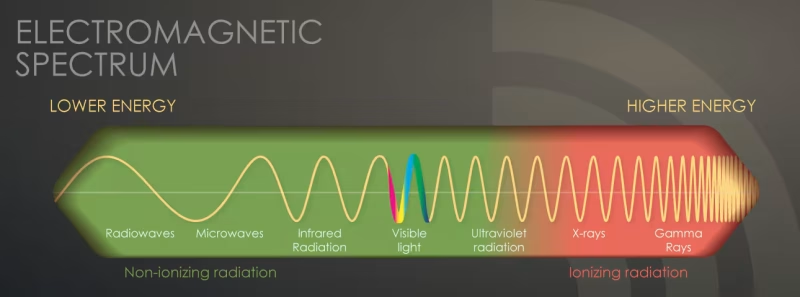
5G and Non-Ionizing Radiation
5G networks operate primarily in the radio frequency (RF) spectrum, which is a subset of non-ionizing radiation. This is far lower in energy compared to ionizing radiation. The National Cancer Institute and the World Health Organization (WHO) emphasize that there is no conclusive evidence linking non-ionizing radiation from sources like 5G to cancer or other health issues. According to WHO, “current evidence does not confirm any adverse health effects of low-level electromagnetic fields, including those in the radiofrequency range used by 5G” (World Health Organization, 2021) .
5G falls within the radio waves and microwave regions of the electromagnetic spectrum, which are non-ionizing.
Do 5G Networks Cause Cancer?
Health authorities like the U.S. National Cancer Institute (NCI) and the European Commission have reviewed the existing evidence and generally conclude that there is no conclusive evidence that RF-EMF exposure, including from 5G, causes cancer. The NCI states that “no consistent evidence” has been found to support a link between RF-EMF exposure and cancer, emphasizing that the existing research does not show a cause-and-effect relationship (National Cancer Institute, 2020).
Studies on 5G and Cancer
The International Agency for Research on Cancer (IARC), part of the World Health Organization (WHO), classified radiofrequency electromagnetic fields (RF-EMF) as “possibly carcinogenic to humans” (Group 2B) in 2011. This classification was based on limited evidence from studies on long-term, heavy mobile phone use (1G, 2G, and/or 3G technologies). Group 2B also includes substances like talc powder and pickled vegetables. The WHO is currently undertaking a project to assess the health risks of 5G, with a risk assessment due in 2025.
Biological Effects of Non-Ionizing Radiation
Studies examining the biological effects of radiofrequency (RF) radiation have focused on both thermal and non-thermal effects, particularly in the context of increasing RF exposure from technologies like 5G. The primary and well-established effect of RF radiation is tissue heating due to energy absorption. This is quantified by the Specific Absorption Rate (SAR), which measures the power absorbed per kilogram of tissue (W/kg). Exposure to RF radiation above certain levels can lead to an increase in body temperature, potentially causing harm if the exposure is prolonged or intense enough.
Experimental studies have shown that significant heating can occur in animals at SAR levels as low as 1 W/kg, with higher levels resulting in more pronounced effects. For example, a study found that male rats exposed to RF radiation exhibited increased incidences of cardiomyopathy and malignant schwannoma due to chronic thermoregulatory stress (Occupational Safety and Health Administration).
Research has indicated that low-level RF exposure may lead to various biological effects, such as abnormal gene transcription, DNA damage, and neurotoxicity. Reports have highlighted potential impacts on human and animal sperm morphology and function, as well as behavioral changes in offspring exposed during pregnancy. These findings raise concerns about possible non-thermal biological effects.
However, the evidence for non-thermal effects remains contentious. While some studies suggest a correlation between RF exposure and health issues like brain tumors, methodological limitations often prevent definitive conclusions about causality. For instance, epidemiological studies have noted associations between heavy mobile phone use and increased glioma risk, but these findings are not universally accepted, as confounding factors make it difficult to establish clear causality.
It is important to note that exposure levels from 5G technology remain below internationally recognized safety limits set by organizations such as the International Commission on Non-Ionizing Radiation Protection (ICNIRP). These limits are designed to protect against both thermal and non-thermal effects based on current scientific understanding.Regulatory bodies emphasize that while ongoing research is necessary to fully understand the implications of long-term RF exposure, current evidence does not support significant health risks at levels typically encountered by the general public (Australian Radiation Protection and Nuclear Safety Agnecy).
Long-Term Research and Knowledge Gaps
The GOLIAT Project is an initiative focused on investigating the health implications of RF-EMF (radiofrequency electromagnetic field) exposure in real-world settings, with a particular emphasis on occupational health. This collaborative project involves several European institutions and employs a range of innovative methodologies, including in vivo, in vitro, and human trials. The primary objective is to assess neuropsychological effects and broader health impacts at the population level. By conducting controlled studies in workplaces that utilize 5G technology, the project aims to gather robust data on potential health risks associated with increased RF exposure.
The importance of continued studies on RF radiation, particularly with the widespread adoption of 5G technology, lies in addressing the unknowns about its long-term biological impacts. While current safety limits set by organizations like the ICNIRP are based on existing knowledge, ongoing research is crucial to ensure these limits remain protective as new data emerges.
Given the uncertainties surrounding RF exposure and its potential health implications, many experts advocate for a precautionary approach. This approach includes conducting thorough assessments before deploying new technologies and continuously monitoring their effects on public health. With increasing exposure levels due to the proliferation of wireless devices and infrastructure, it is essential to investigate potential cumulative effects on health over time. Longitudinal studies are necessary to identify any emerging trends or health issues associated with prolonged 5G exposure.
Clearing Up Myths about 5G and Cancer
There are several intriguing myths circulating about 5G technology, including the idea that 5G frequencies are more dangerous, that 5G radiation is the same as X-rays, that 5G weakens the immune system, and even the bizarre claim that COVID-19 vaccines contain 5G microchips. These misconceptions often spark fear and confusion, but they are far from the truth.
Myth:5G Radiation Is the Same as X-Rays
To understand the difference between ionizing and non-ionizing radiation, imagine the analogy of a hammer versus a gentle push. Ionizing radiation, like X-rays, is like using a hammer. It has high energy, capable of breaking atoms and molecules, potentially damaging DNA and increasing the risk of cancer. Non-ionizing radiation, such as 5G, is like a gentle push. It has much lower energy, too weak to break atoms or molecules, so it doesn’t cause DNA damage or pose the same health risks. In simple terms, ionizing radiation is powerful enough to cause harm, while non-ionizing radiation is harmless due to its lower energy levels.
Myth: 5G Towers Increase Cancer Risk for Nearby Residents
Numerous studies and reports from reputable agencies have examined exposure to radiofrequency (RF) radiation from cell towers, consistently demonstrating that the levels emitted are significantly below safety thresholds and do not pose a cancer risk. The Federal Communications Commission (FCC) has set exposure limits for RF radiation from cell towers at approximately 580 microwatts per square centimeter, a level designed to protect public health. The FCC affirms that typical RF levels near cell towers are well below this threshold, and significant exposure would only occur if individuals were within a few feet of the antennae for extended periods.
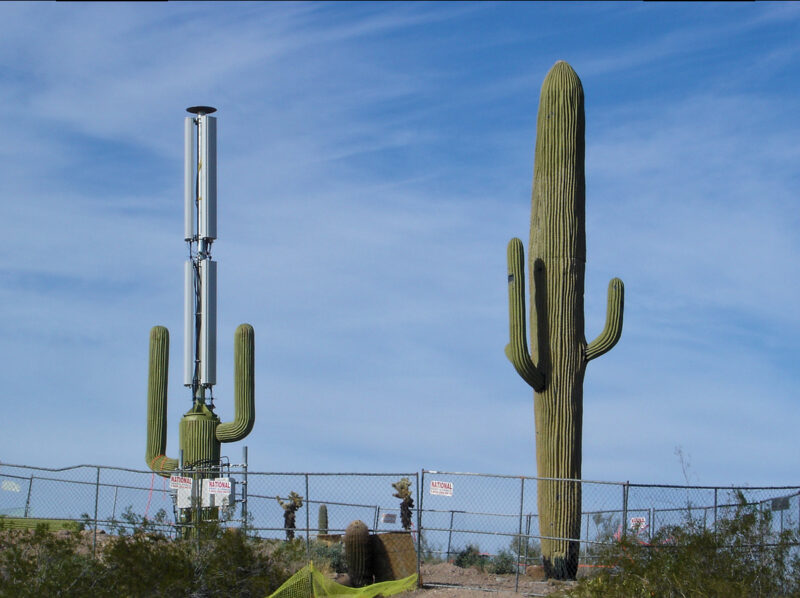
While 5G towers are fairly common to see, it’s rare to see them under construction.
Similarly, the World Health Organization (WHO) has reviewed extensive scientific literature and concluded that there is no conclusive evidence linking RF radiation from mobile phone base stations, including cell towers, to adverse health effects like cancer. The WHO emphasizes that exposure levels from these sources are generally much lower than established safety limits, reinforcing that RF radiation from cell towers does not pose a health risk.
Myth: 5G Weakens the Immune System
The claim that 5G weakens the immune system is not supported by scientific evidence. Studies on low-level radiofrequency electromagnetic fields (RF-EMF) from 5G show no impact on immune function. The Australian Radiation Protection and Nuclear Safety Agency (ARPANSA) confirms that low-level RF exposure from 5G does not affect immune responses, with no changes in antigens, antibodies, or oxidative stress. Similarly, the World Health Organization (WHO) concludes that RF-EMF from 5G remains within safety limits and poses no risk to the immune system.
While some studies theorize that long-term, high-level RF exposure could affect cellular mechanisms, such as calcium channel activity and oxidative stress, these effects occur at levels much higher than those from 5G. For example, research cited in parliamentary discussions mentions potential effects on free radicals at high power levels, but these are not relevant to the low intensities of 5G. Claims that 5G weakens the immune system or contributes to viral replication, such as COVID-19, are unfounded.
Deloitte Insights and other reviews have debunked these myths, emphasizing that 5G operates within safe parameters and does not compromise immunity. International agencies like the FCC, ARPANSA, and WHO set strict safety standards for RF exposure to prevent harmful effects. Measurements consistently show that 5G emissions fall far below these thresholds.In conclusion, there is no evidence that 5G weakens the immune system. Claims to the contrary often misinterpret studies conducted at much higher RF exposure levels than those generated by 5G. Regulatory bodies ensure emissions remain well below harmful levels, making 5G safe for public health.
Myth: COVID-19 Vaccines Contain 5G Microchips
The myth that COVID-19 vaccines contain 5G microchips has been widely circulated but is entirely unfounded. In reality, COVID-19 vaccines, including those developed by Pfizer-BioNTech and Moderna, contain specific ingredients aimed at triggering an immune response against the SARS-CoV-2 virus. These ingredients primarily include messenger RNA (mRNA), lipids, salts, and sugars. There are no microchips or tracking devices in any of these vaccines.
For example, the Pfizer-BioNTech vaccine contains mRNA encoding the spike protein of SARS-CoV-2, various lipid compounds to deliver the mRNA into cells, salts like potassium chloride and sodium chloride for pH balance, and sucrose for stability during freezing. Similarly, the Moderna vaccine includes mRNA encoding the spike protein, specific lipids, and stabilizers like tromethamine and sucrose to maintain vaccine integrity.
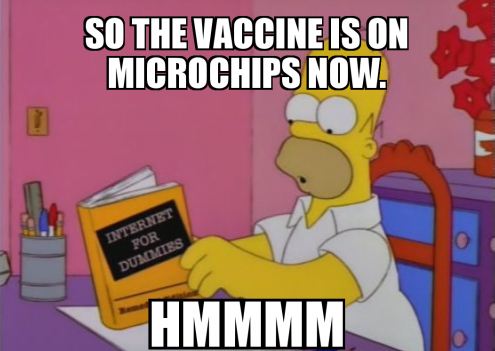
All COVID-19 vaccines undergo rigorous testing and regulatory review by organizations such as the U.S. Food and Drug Administration (FDA) and the World Health Organization (WHO), ensuring that the ingredients are safe and effective for public use. Thus, there is no basis for the claim that COVID-19 vaccines contain 5G microchips.
Regulatory Standards and Safety Measures for 5G
International and national regulatory bodies play a crucial role in ensuring the safety of 5G technology by setting exposure limits, conducting research, and establishing safety frameworks. Organizations like ARPANSA, BfS, STUK, DSA, ICNIRP, ITU, WHO, and FCC, among others, conduct research, set standards for EME exposure, and monitor compliance to mitigate potential risks1234. These bodies ensure that 5G technology operates within safe parameters, addressing public health and environmental concerns. They also foster collaboration among various stakeholders to develop secure and resilient 5G deployment strategies.
How Are Exposure Limits Defined?
Safety limits for RF exposure are set to prevent health risks, with key guidelines based on the Specific Absorption Rate (SAR), measured in watts per kilogram (W/kg), which indicates how much RF energy the body absorbs. These limits are designed to account for both thermal and non-thermal effects and protect vulnerable groups.Regulatory bodies like Health Canada and the FCC evaluate scientific studies on RF exposure, using a weight-of-evidence approach. Basic restrictions on internal electric field strength and SAR are set to avoid harmful effects, and reference levels for external electric and magnetic field strength are provided.
SAR limits are much lower than levels shown to cause health effects. For occupational/controlled exposure, the SAR limit is 0.4 W/kg, with a peak of 8 W/kg over any 1 gram of tissue. For the general population/uncontrolled exposure, the SAR limit is 0.08 W/kg, with a peak of 1.6 W/kg over 1 gram of tissue.The FCC sets exposure limits for the public at approximately 580 microwatts per square centimeter. For exposure to approach these levels, an individual would have to be very close to the antenna for extended periods, making such exposure highly unlikely.By following these guidelines, regulatory bodies ensure that RF emissions from wireless technologies, including 5G, remain safe for the public.
You Can Also Read How Long After Radiotherapy Can You Drink Alcohol? by Oncodaily
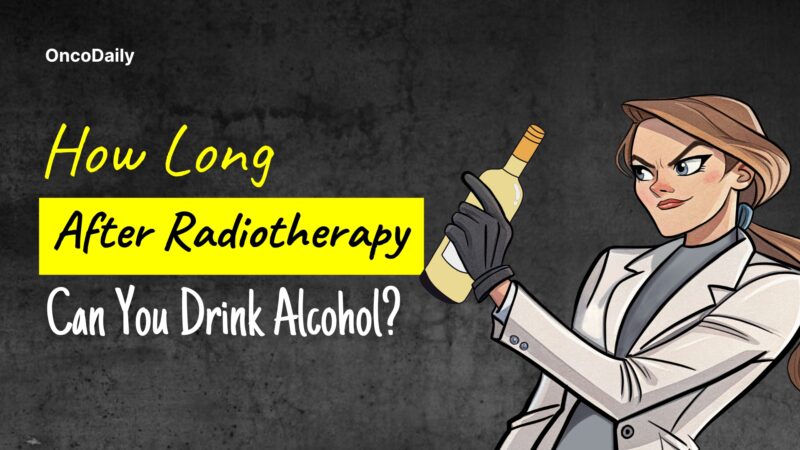
Comparing 5G Exposure to Other Devices
5G exposure levels are similar to or lower than previous mobile networks, comparable to Wi-Fi and existing cell phones. The electric field strength near 5G phones may be slightly higher than 4G, but still within safe limits. 5G uses millimeter waves (MMWs) for faster data, which can cause skin or eye damage in high intensities, but regulations ensure exposure is kept low. While concerns about long-term non-thermal effects of MMWs exist, research is still limited. Overall, 5G’s radio wave exposure is a small addition to background levels, with strict safety guidelines in place to prevent harm.
Are Millimeter Waves Used in 5G Harmful?
Millimeter waves (MMWs), a crucial component of 5G technology, are primarily absorbed by the skin, limiting their penetration to deeper tissues. This characteristic reduces the likelihood of harmful effects, as the energy is concentrated in the epidermis and dermis. MMWs interact mainly with the skin due to their absorption by the water content in these layers. At 42 GHz, MMWs penetrate human skin to a depth of about 0.65 mm, affecting skin structures but greatly attenuating before reaching deeper tissues like the fat layer.
Dosimetric studies using skin models have evaluated key characteristics such as power density (PD), penetration depth (δ), and specific absorption rate (SAR). These studies show that SAR can reach its maximum in blood vessels oriented parallel to the electric field, exceeding SAR in the surrounding dermis by 40%-42% at 42.25 GHz. Research also observes a moderate SAR peak in the therapeutic frequency range (42-62 GHz) within the skin at a depth of 0.3-0.4 mm. IEEE Trans Biomed Eng 2009
A review of studies on the physiological effects of millimeter waves (MMWs) on skin and skin cells reveals that current scientific evidence is insufficient to establish science-based exposure limits or develop comprehensive health policies. The review emphasizes the need for more high-quality research to determine the potential health risks, or lack thereof. In light of this limited evidence, some researchers advocate for precautionary measures to be considered before the full deployment of 5G technology. Rev Environ Health 2020
Practical Tips for Reducing Radiofrequency Exposure
To address concerns about RF radiation exposure, individuals can take several actionable steps to minimize risk.
- Maintain distance by keeping devices like cell phones and Wi-Fi routers away from your body, and use speakerphone or wired headsets while talking.
- Opt for wired internet connections (Ethernet) instead of Wi-Fi to reduce RF radiation exposure. Limit usage time by reducing call duration and screen time, and consider texting instead of calling.
- Turn off devices when not in use to eliminate unnecessary RF emissions, and activate airplane mode on your phone during the night or when not in use to stop RF transmissions.
- Consider using EMF shielding products, such as curtains or covers, in areas where you spend significant time.
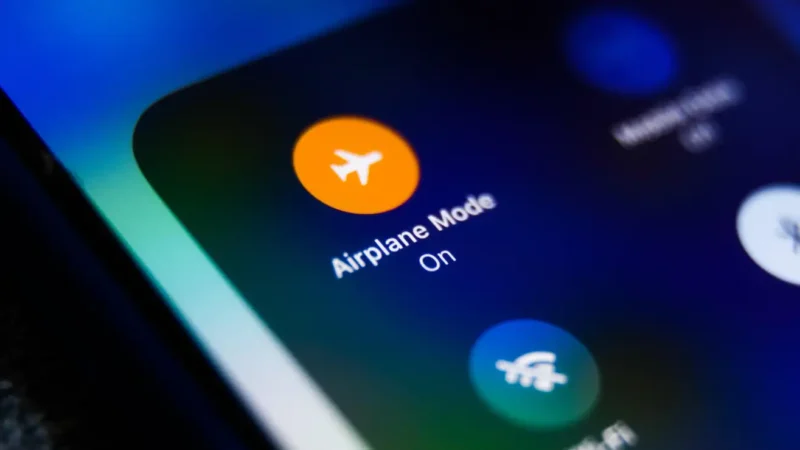
Photo: Jakub Porzycki/NurPhoto (Getty Images)
Finally, choose low-radiation devices and avoid Bluetooth headsets that emit radiation close to the head. By implementing these strategies, individuals can effectively reduce RF radiation exposure and promote a healthier living environment.
You Can Also Watch How to Bridge Science, Policy & Innovation – Shushan Hovsepyan and Catharine Young by OncoDaily
Transforming Sectors with 5G Technology
5G technology is revolutionizing various sectors by enhancing capabilities and efficiency. In healthcare, it enables remote patient monitoring, telehealth services, and real-time data transmission, improving patient care. The travel industry benefits from real-time traffic updates and vehicle communication, enhancing safety. In agriculture, 5G facilitates precision farming through IoT sensors and drones, optimizing resource use. The fintech sector leverages 5G for faster transaction processing and improved mobile banking, especially in remote areas. Retail sees enhanced customer experiences through augmented reality, real-time inventory tracking, and personalized marketing. Logistics improves with real-time fleet management and autonomous delivery systems.
In the automotive industry, 5G supports connected vehicles, enhancing safety features and enabling autonomous driving. Urban planning benefits from smart city applications, improving traffic management. Manufacturing sees increased productivity with automation, predictive maintenance, and enhanced data transfer. Finally, space communication improves with 5G for better data transmission in Earth observation and satellite management. These diverse applications highlight the transformative potential of 5G technology, driving innovation and efficiency across industries.
Wrriten by Aharon Tsaturyan, MD
-
Challenging the Status Quo in Colorectal Cancer 2024
December 6-8, 2024
-
ESMO 2024 Congress
September 13-17, 2024
-
ASCO Annual Meeting
May 30 - June 4, 2024
-
Yvonne Award 2024
May 31, 2024
-
OncoThon 2024, Online
Feb. 15, 2024
-
Global Summit on War & Cancer 2023, Online
Dec. 14-16, 2023
